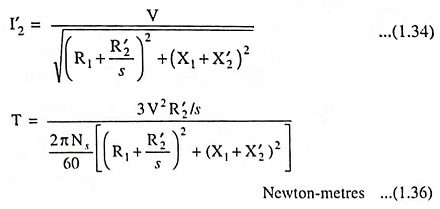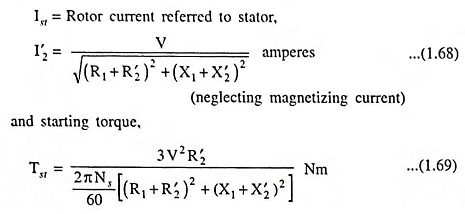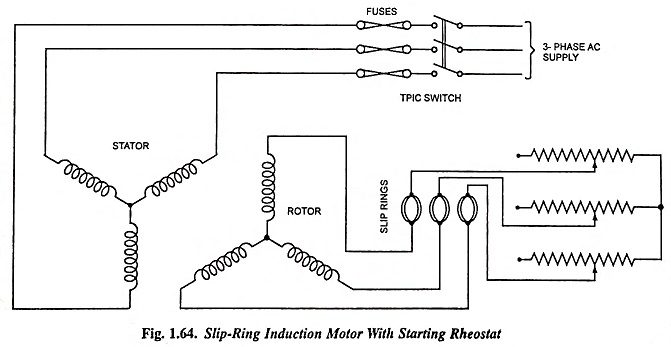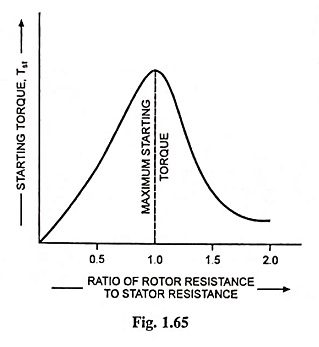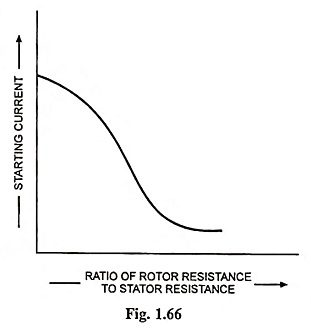Starting of Slip Ring Induction Motor:
The starting of slip ring induction motor is given below,
At start, speed of motor is zero and, therefore, slip s = 1.0.
Substituting s = 1.0 in Eqs. (1.34) and (1.36),
we have
Starting current per phase,
The starting torque becomes maximum when the rotor resistance is made equal to its leakage reactance. Since the rotor resistance is not more than 1 or 2 per cent of its leakage reactance otherwise efficiency will be low therefore, in order to obtain high starting torque resistance must be inserted in the rotor circuit at start and cut out gradually as the motor picks up speed. The additional resistance in the rotor circuit will not only increase the starting torque but will limit the starting current also to a safer value. This starting of slip ring induction motor method is useful in case of slip-ring motors only, in which the external resistance at the starting instant is introduced in the rotor circuit by taking the rotor winding terminals out to the slip rings mounted on the shaft with brushes resting on them, as shown in Fig. 1.64. When the motor attains the normal speed, the rotor winding is short circuited through the slip rings and brushes are lifted from them automatically.
Since slip-ring induction motor develops high starting torque due to introduction of external resistance in the rotor circuit at the starting instant with reasonable starting current hence such motors can be started under load also. The variation of starting torque and starting current with rotor resistance are depicted in Figs. 1.65 and 1.66 respectively.
In case of squirrel cage induction motor it is not possible to insert an external resistance in the rotor circuit for starting purpose because of its cage construction and hence such motors will have low starting torque. These motors on account of their robust construction, are more reliable; cheaper and easier to maintain as compared to slip-ring induction motors. These motors are employed where constant torque is required, e.g., in paper mills, textile mills, compressors and conveyers etc.
